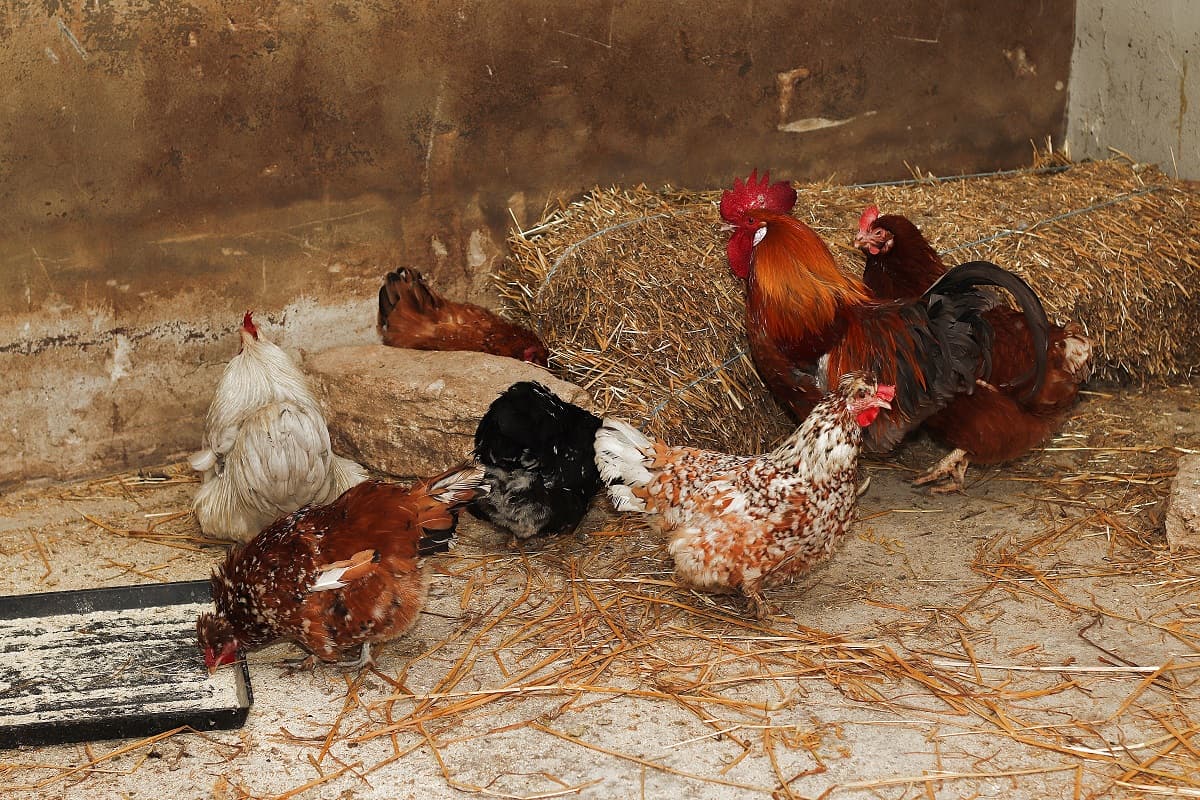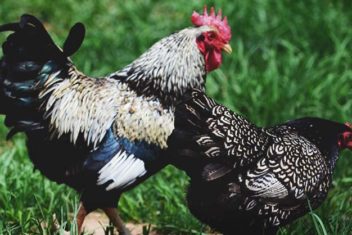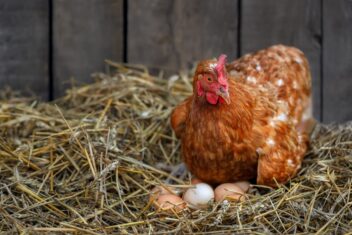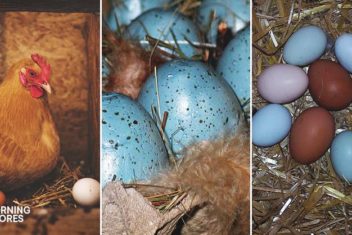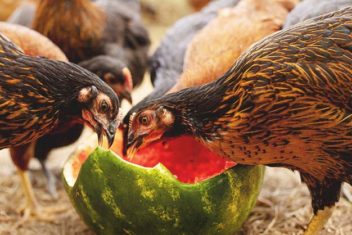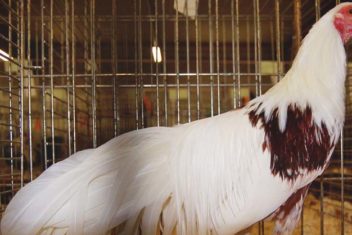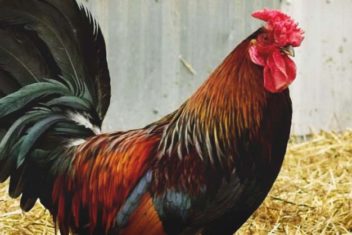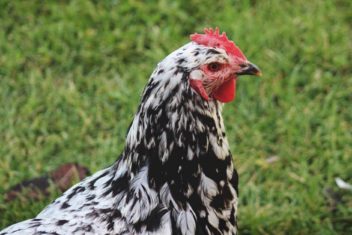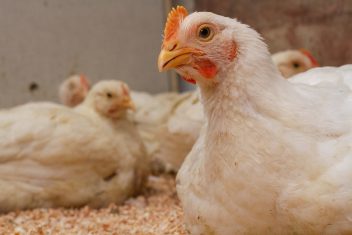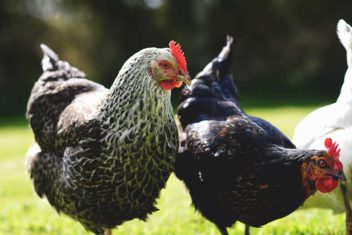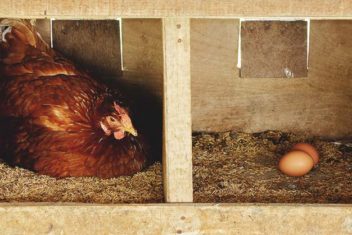Whether you build your own chicken coop or purchase one from the store, there are plenty of considerations you will need to make.
Should the coop be constructed out of wood or plastic? How many nesting boxes should it have? How many square feet per bird? Do you need all those extra features, like swings, roosting bars, and built-in feeders?
While many of these considerations are purely cosmetic, there’s one decision you will need to make that is of the utmost importance.
What kind of floor should it have?
Choosing a floor for your chicken coop raises health, sanitation, and budgetary concerns.
Of course, there’s the comfort level of your chickens to think about and the overall appearance of your coop, too.
When choosing the right floor for your coop, keep these factors in mind.
Going Without a Floor in the Coop
Before diving too deeply into the many types of flooring you can use in your chicken coop, it’s important to address the question. Can you just go without a floor in the chicken coop?
Yes and no. There are certain benefits and disadvantages to this concept.
The main issue with not having a floor in the chicken coop is that, if the coop is stationary, it can be very difficult to remove chicken manure.
If you’re keeping your chickens in a barn without a floor, for instance, you’ll find that the poop just gets repeatedly trampled by the chickens until it’s fully packed down. If you have a floor, you can just scrape or sweep the manure out of the barn.
You’ll also have to make sure, if you don’t use a floor, that there is a way to keep predators out of the coop.
If the coop is tight and secure, this shouldn’t be an issue.
However, in some cases, you may have to worry about opportunistic critters digging under the walls of the coop and getting inside.
A floorless chicken coop may be the best bet, however, for coops that are designed in a tractor style. This will allow you to move the coop wherever it needs to go and the droppings to be deposited in one location. There’s no need for cleaning since the coop will be moved often and the manure left to lie where it falls.
Types of Materials for a Chicken Coop Floor
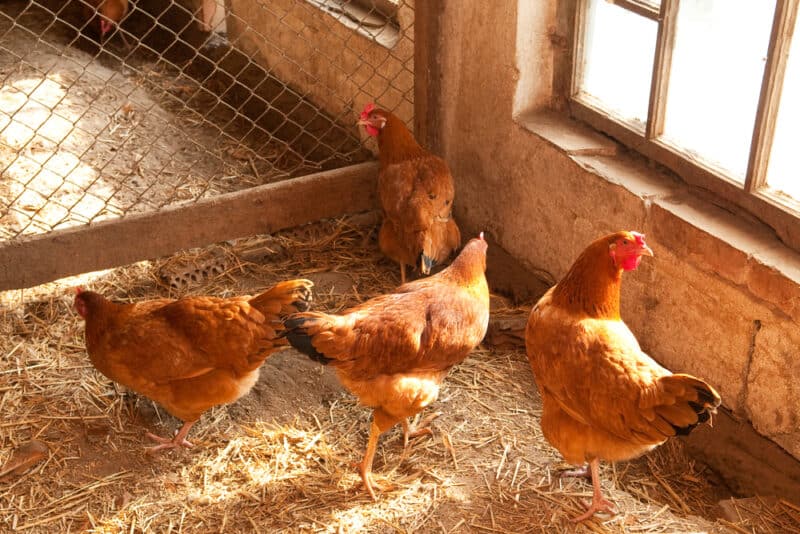
There are several common materials you might consider for a chicken coop floor – here are your options.
1. Concrete
Many chicken keepers tout the benefits of a concrete floor for their coops. Truth be told, concrete is probably the safest flooring option as it eliminates the possibility of digging predators. It is also low maintenance and does not rot, meaning it can last forever.
It’s also damage-free – you’re going to have a hard time cracking or otherwise harming your concrete floors!
Concrete keeps out rodents and stays cooler in warm weather, a benefit for chicken keepers in hot climates. It’s also easy to clean and disinfect. Even the biggest mess can easily be taken care of with a bucket of bleach and a blast from a hose.
That said, pouring a concrete slab can be expensive and time-consuming. If not poured and leveled correctly, gaps around the sides (between the floor and the walls) can allow cold drafts and predators.
It can crack if the soil is not stable and, over time, injure your chickens’ feet. It is also cold in colder weather, so for cold-climate chicken keepers, that’s something to be considered.
Concrete is a permanent solution, too. That’s a benefit in that you’ll never have to do anything with it again – but if you plan on moving your coop in the future, that possibility will be eliminated.
2. Plywood
Plywood is another option that many chicken keepers turn to when designing their coops.
It poses several benefits. For one, it is readily available and inexpensive. It is easy to build with, allowing you to put up a chicken coop extremely fast. It’s also relatively easy to maintain, having none of the gaps and cracks that you might find with wooden slat flooring.
For the most part, plywood keeps predators and rodents out, too.
However, plywood can prove to be an issue when it comes time to clean. Bits of bedding can stick to the plywood, and it’s not really possible to use a pressure washer to get the mess out. Of course, it can rot over time, too, even if you use pressure-treated wood.
3. Wooden Slats
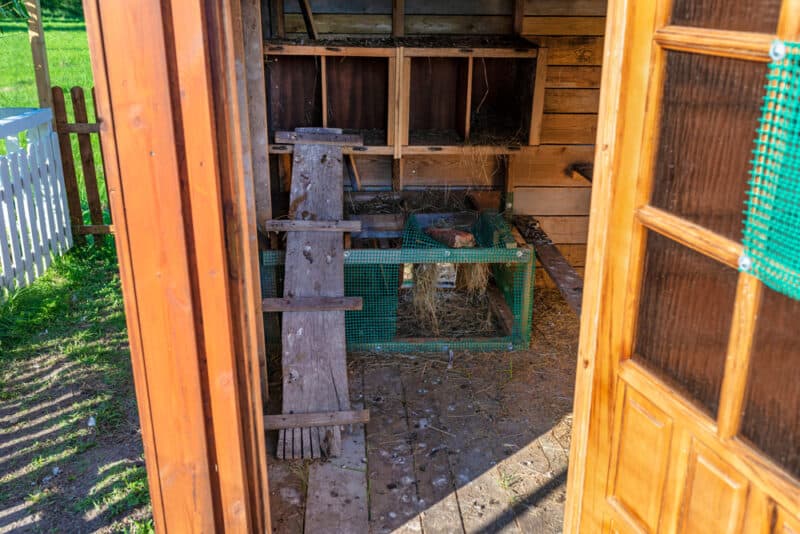
Wooden floors, either those made of slats or any other non-plywood wood options, are also easy to build and readily available. Many people (myself included) use wood floors because they are easy and quick to construct relatively easy to clean, and low in cost.
The downside to using wood for your floor is that it can sometimes be difficult to get clean. Droppings can get stuck in the crevices and gaps between boards, and they can rot over time. Even if you take the time to pressure wash this kind of coop, keeping it clean can still be a hassle.
You also need to pay attention to how these floors are constructed – space your boards too widely and predators will be able to get inside.
4. Vinyl
Some chicken keepers even use vinyl on their coop floors. This is not something that I recommend. Made of materials like ground cork dust, solidified linseed oil, pine rosin, wood flour, and other fillers, it can be toxic.
While that’s not usually a problem when we use vinyl in our own homes, it’s problematic for chicken coops. Why? Think of it this way – when was the last time you took a bite out of your kitchen floor?
Vinyl is durable, but you need to be careful about using it in the coop, as chickens are likely to ingest bits and pieces. They’ll also tear it up over time so you’ll have to keep replacing it.
5. Wire
Wire is another option. If you decide to go with wire, only use the strongest, least flexible option, so that you have some protection from predators. Wire is probably the least safe option in terms of coop safety.
However, it is the best option regarding cleanliness. The droppings will simply fall through the flooring so you won’t need any bedding. If you’re interested in a portable chicken coop, wire is the way to go.
It can also be the most sanitary, as there is very little direct contact with any droppings. It offers an additional benefit of ventilation, particularly if the coop is elevated, meaning it can be cooler in the summer.
Of course, the converse of that is that it can be somewhat drafty in the winter. When the right type of wire isn’t used, you also have the added problem of droppings getting stuck in the wires. This can make it, counterintuitively, harder to clean.
I don’t recommend wire for chicken coops that will serve as the “primary hang out” for your chickens. Prolonged exposure to a wire floor can injure your chickens’ feet, so if they aren’t going to be allowed outside to free-range, I’d steer clear of this option.
If you decide to use wire for your chicken coop floor, use a material that is hard and durable – hardware cloth or welded wire are good options for predator prevention.
6. Rubber Mats
Rubber mats aren’t usually used in exclusivity in a chicken coop.
However, they can be used on top of any of the other flooring options we mentioned for added durability. To do this, most chicken keepers will purchase mats designed for horse or cattle stalls from their local feed suppliers.
These heavy-duty mats don’t eliminate the need for bedding – you will still need bedding in the coop. However, they add one extra barrier to reduce the timeline from building to rot. They also reduce the “slipperiness” of a wooden or concrete floor and can help keep it both warmer and cooler.
Of course, they’re expensive. They also serve as just one more feature in the coop that will need to be replaced over time.
Painting Your Floor: Yes or No?
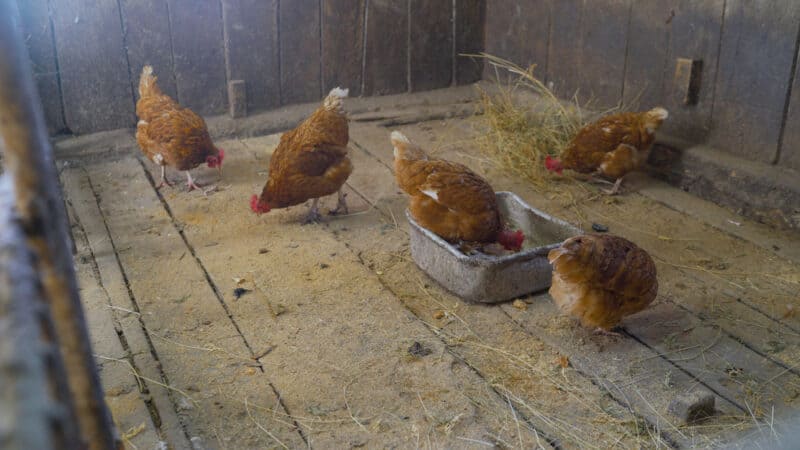
Some people advocate for painting the floor of the chicken coop. Paint is often used as a liner to help fill in a gap or offer a permanent finish that will protect the floor from damages.
If you use bedding in the coop, paint and other lining materials (other options include vinyl, linoleum, rubberizing material like Flex Seal, and mats) are probably not necessary.
The exception is if you regularly disinfect your chicken coop. Disinfectants can damage a wood floor in particular, so a painted floor might be helpful in that case.
Otherwise, it’s a step that you probably don’t need to worry about. Plus, some paints and other flooring materials, like vinyl and rubberized coatings, can be toxic to chickens if they peck at them.
Don’t Neglect the Bedding
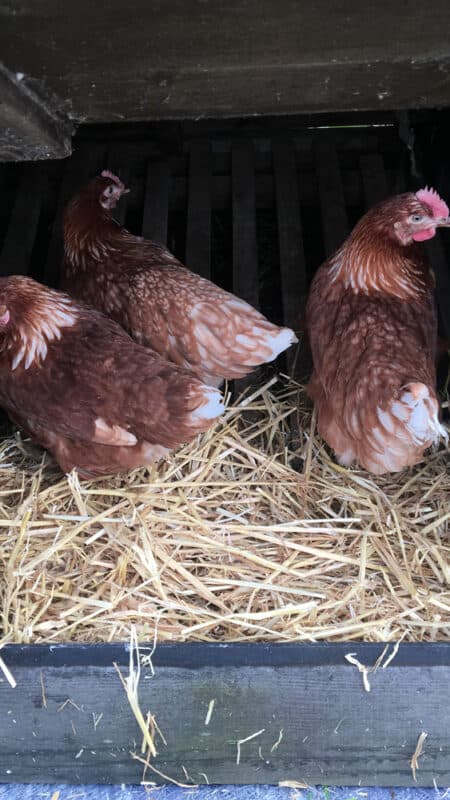
A good bedding pack is essential regardless of the type of chicken coop floor you decide to install.
Even the harmful effects of a concrete floor (particularly those related to cold weather and the impact on chickens’ feet) can be mitigated with good bedding.
A soft bedding pack will prevent direct contact between your chickens and the floor, reducing the likelihood of leg injuries.
Some of the most popular bedding options include wood shavings, straw, sand, and shredded paper.
We use a mixture of shredded paper, shredded cardboard, wood shavings, and straw in our coop. This helps keep costs down since we use whatever we happen to have available. It can also help reduce odors and makes disease problems virtually nonexistent.
You can read more about the pros and cons of various types of chicken bedding here.
Which Kind of Floor is Best?
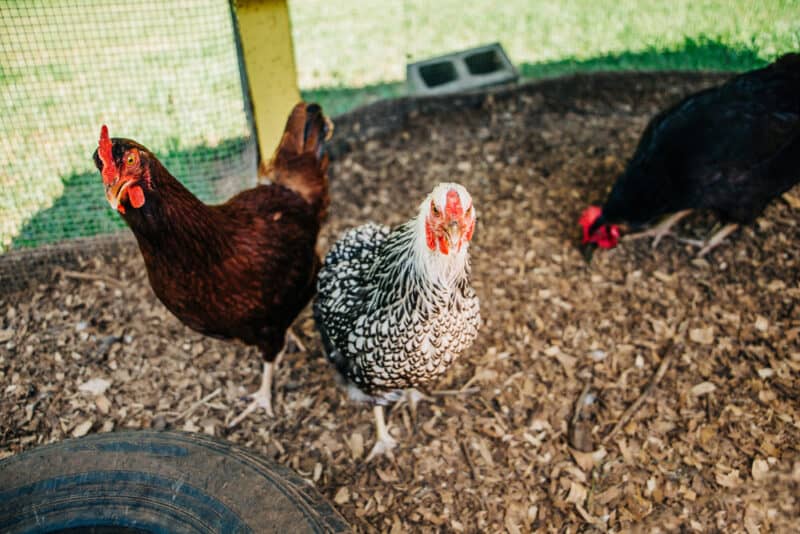
Ultimately, there is no single best option for a chicken coop floor, although you’ll definitely have to consider the concerns raised above to determine the best option for your unique situation.
Personally, we have always used a plywood floor. While that has several disadvantages (the tendency to rot being one of them), it is secure and lightweight. It is a good option for our portable chicken coop that we move in and out of the garden each year.
Weigh up all the potential factors listed above.
You’ll be able to find the right floor to keep you – and most importantly, your chickens – happy and comfortable.
